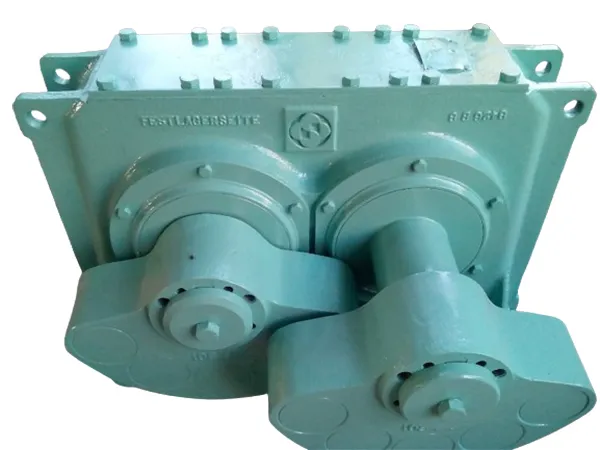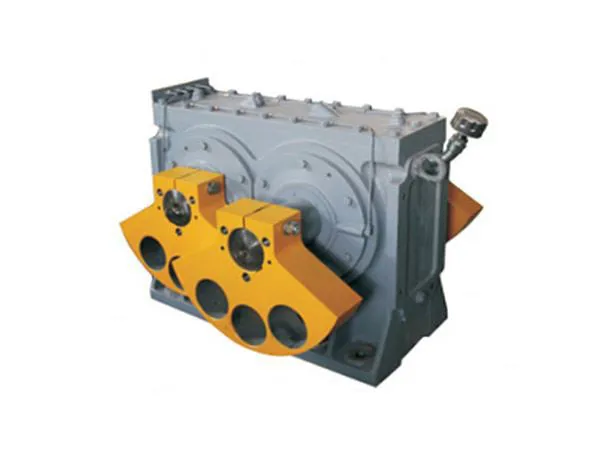time:Mar 21, 2025 source:ZEXCIT
The vibrating screen exciter plays a crucial role in determining the screening efficiency, as it directly influences the vibration characteristics of the screen. The exciter is arguably the most crucial component of a vibrating screen regarding its impact on screening efficiency.

Generating the Vibration: The exciter creates the vibratory motion that causes material to stratify and pass through the screen mesh. Without a properly functioning exciter, there's no screening.
Amplitude and Frequency: The exciter controls the amplitude (the distance of the screen's movement) and frequency (the number of oscillations per unit time) of the vibration. These two parameters are directly related to screening efficiency:
Low Amplitude: Insufficient stratification of the material bed. Particles are less likely to encounter and pass through the appropriate screen openings. Can lead to blinding (screen blockage).
High Amplitude: Excessive bouncing and "dancing" of the material bed. While it might seem like aggressive screening, it can actually reduce the probability of particles passing through the screen, especially finer materials. Also increases wear and tear on the screen.
Low Frequency: Slower material travel across the screen, potentially leading to overloading and reduced throughput. May be ineffective for finer materials.
High Frequency: Faster material travel, potentially reducing the residence time of particles on the screen and decreasing the chance of successful separation. Can also create higher noise levels.

The Optimal Combination: The ideal amplitude and frequency are highly dependent on:
* Material Properties: Particle size distribution, shape, density, moisture content, stickiness, etc.
* Screen Mesh Size: Finer meshes generally require higher frequencies and lower amplitudes.
* Screen Angle: Steeper angles may require higher amplitudes to overcome gravity.
* Desired Separation Efficiency: How accurately you need to separate the different size fractions.
* Feed Rate: The amount of material being fed onto the screen.
Stroke Direction and Angle: Some exciters allow control over the stroke direction (the angle of the vibratory motion relative to the screen surface). This influences:
Material Conveyance Rate: The speed at which material moves across the screen.
Stratification Effectiveness: How well the material separates into layers based on size.

Discharge Characteristics: How material is discharged from the screen.
The stroke angle affects the forces applied to particles, influencing their trajectory and probability of passing through the screen.
Exciter Type and Design: The type of exciter (e.g., eccentric shaft, electromagnetic, vibratory motor) impacts its efficiency and controllability:
Eccentric Shaft: Robust and reliable but offers less precise control over amplitude and frequency compared to electromagnetic exciters.
Electromagnetic: Allows for precise and independent control of amplitude and frequency, making it suitable for applications requiring fine-tuning. But requires more advanced controls and can be more sensitive to harsh environments.

Vibratory Motors: A common and versatile choice.
Reliability and Maintenance: A failing exciter will lead to reduced or erratic vibration, significantly impacting screening efficiency. Proper maintenance (lubrication, bearing replacement, balancing) is essential to maintain optimal performance.
In summary, the vibrating screen exciter is not just a source of vibration; it's a precision instrument that must be carefully selected, configured, and maintained to achieve optimal screening efficiency. Understanding the relationship between exciter parameters and material properties is key to maximizing screen performance. If the exciter's settings are off, even a perfectly good screen with the right mesh size will perform poorly.
What is the working principle of the vibrating screen exciter?
How to reduce noise in vibrating screen operation

The DF Series Vibrator refers to a range of specialized vibrators used in various industrial applications to generate controlled vibrations. These vibrators are designed for reliability, durability, and efficiency, making them suitable for integration into equipment such as vibrating screens, feeders, conveyors, compactors, and sieves.
READ MORE
NE Series Vibrators are versatile and reliable components used in a wide range of industrial applications to generate controlled vibrations for material handling, processing, compaction, and testing purposes. Their robust construction, high efficiency, and adjustable settings make them suitable for various industries requiring vibration-based solutions.
READ MORE
The FE series vibrator is a specialized component used in various industrial applications to generate controlled vibrations. These vibrators are designed to be reliable, durable, and efficient, making them suitable for integration into equipment such as vibrating screens, feeders, conveyors, compactors, and sieves
READ MORECopyright © 2023 Xinxiang Zongyuan Machinery Equipment Co., Ltd. | All Rights Reserved.